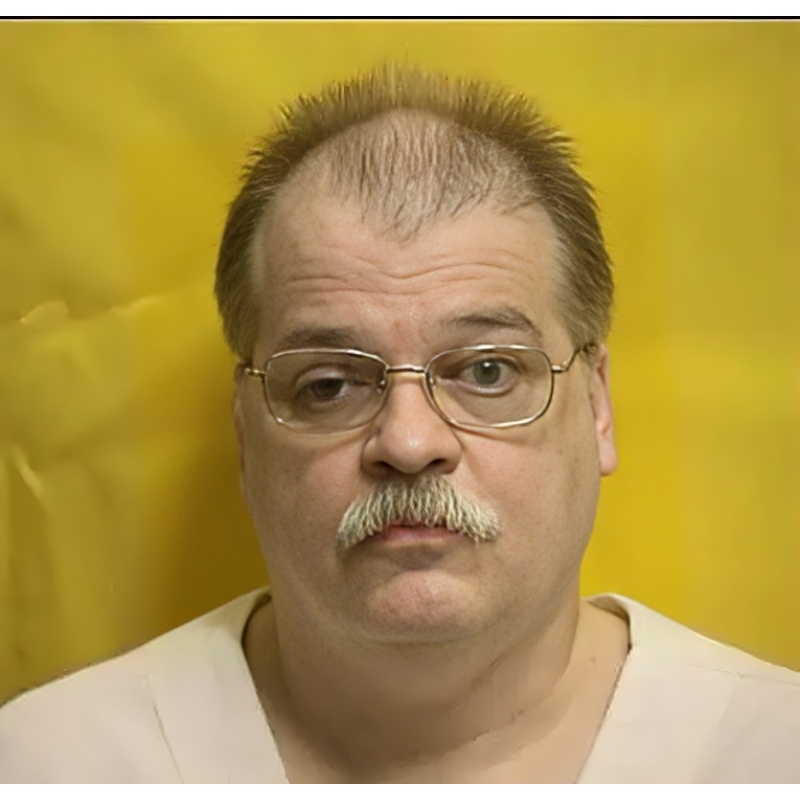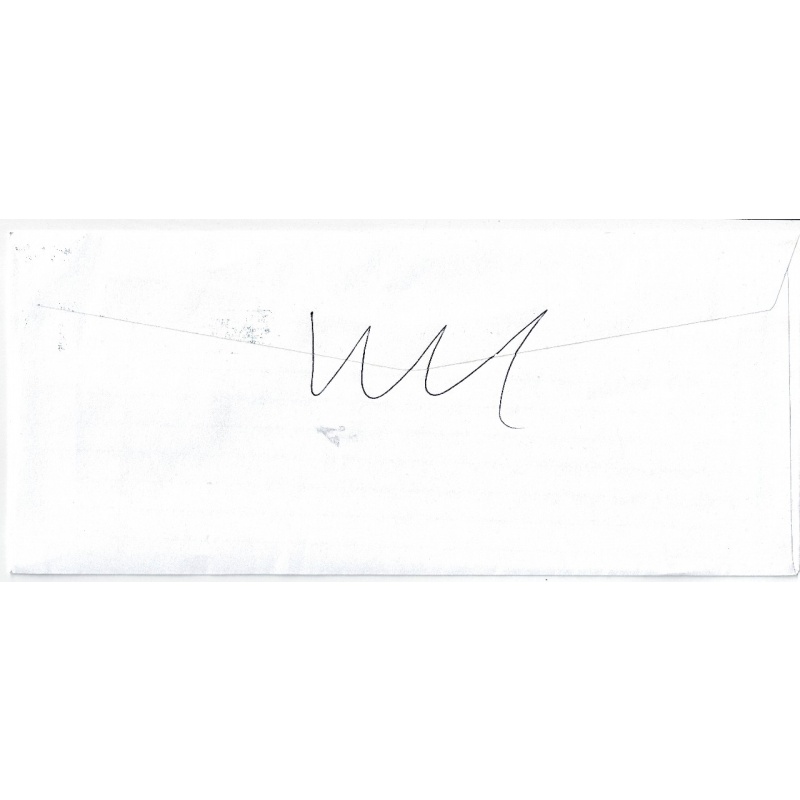RAYMOND A. TWYFORD III | Ohio Death Row | Took it upon himself to seek vigilante justice in the rape of his girlfriend’s minor daughter | Convicted of aggravated murder, aggravated robbery, kidnapping, and having a firearm | ALS
LongfellowSerenade 27
Raymond Twyford was sentenced to death by the State of Ohio for a robbery murder. According to court documents, Raymond Twyford and Daniel Eikelberry would lure the victim, Richard Franks, a mildly retarded individual, to a remote location where he was tortured, shot several times, had his hands cut off and then his wallet stolen. Raymond Twyford would be arrested, convicted and sentenced to death.
$20.00
- Postage
-
$0.00 to United States
Standard Shipping
Get Additional Rates
- Select Country
- Zip/Post Code
- Quantity
Description
R. Twyford. Autographed Letter, Signed. Handwritten, Commercial #10 (4.125 × 9.5 envelope). Cincinnati, OH. Pmk: September 20, 2023. Content unknown. SEALED.
In the early evening hours of September 23, 1992, Athena Cash was walking in a rural area in Jefferson County, Ohio. After traversing the crest of a hill, Cash noticed an object floating in an old strip-mining pond. Although it appeared to be in the shape of a human body, Cash was uncertain whether the object was, in fact, human. Cash subsequently summoned her boyfriend to view the object, and he concluded that the object was a human body. As a result, the couple contacted local law enforcement authorities.
Law enforcement personnel, including Jefferson County Sheriff Fred Abdalla, responded to the scene and found parts of a skull and flesh on the ground. Some seventy-four feet away, the sheriff saw a body lying on its back in the body of water. On the shore, the sheriff also found blood, a pair of glasses, a baseball cap, and six shell casings fired from a .30-06-caliber rifle.
While the body was floating in the pond, Sheriff Abdalla observed that it appeared “as if the head was cut off” and also noticed that “the hands were severed from the body.” Once the body was removed from the water, it was determined that part of the face was still attached but that the skull was missing. Abdalla also discovered that the victim had been shot in the back. At the scene, Dr. John Metcalf, the Jefferson County Coroner, observed the same injuries. In addition, Dr. Metcalf found a pocket calendar diary inside the victim’s shirt pocket. The victim’s name, Richard Franks, as well as a Windham, Ohio address, was written in the diary.
On September 24, 1992, after contacting the Windham Police Department and receiving information that Franks had been missing for two days, Sheriff Abdalla traveled to the village of Windham in Portage County, Ohio. Prior to Sheriff Abdalla’s arrival, Windham Chief of Police Thomas Denvir decided to place Franks’s apartment under surveillance. Chief Denvir had discovered that Daniel Eikelberry lived with Franks, and while surveilling the apartment, Chief Denvir observed Eikelberry and Raymond A. Twyford III, (“Raymond”; b. October 15, 1962 | age 61), in an automobile belonging to Joyce Sonny, Raymond’s girlfriend.
Sheriff Abdalla arrived in Windham and at approximately 4:50 p.m. met local police officials, including Chief Denvir. Around 5:30 p.m. that same afternoon, while Sheriff Abdalla and Chief Denvir waited outside Franks’s apartment for a warrant to enter the premises, Raymond, accompanied by Eikelberry and Terri Sonny, Joyce’s daughter, again drove by in Joyce Sonny’s car. Raymond lived with Joyce Sonny and her daughters, Christina, age eighteen, and Terri, age thirteen, in Windham.
At that time, and at Sheriff Abdalla’s request, Chief Denvir stopped the car to talk with Eikelberry about his missing roommate, Franks. As Raymond got out of Joyce’s 1975 Chrysler sedan, Abdalla noticed “two survival knives, a hatchet and a small hand saw” in the car. Raymond, who was not detained, waited outside Franks’s house while Abdalla questioned Eikelberry at the police station.
After interviewing Eikelberry, Sheriff Abdalla arrested Raymond at around 6:25 p.m. for the murder of Richard Franks and advised Raymond of his Miranda rights. After declining to be interviewed, Raymond was taken to the Windham Police Department and held while police continued to question Eikelberry. At around 7:15 p.m., Raymond on his own initiative indicated that he would like to speak to Sheriff Abdalla and told him, “[S]heriff, I want to talk to you now, I’ll tell you anything you want to know.” Sheriff Abdalla, however, did not talk to Raymond right away. Around 8:30 p.m., Abdalla again advised Raymond of his Miranda rights, and Raymond acknowledged and waived those rights, both orally and in writing.
Raymond told Sheriff Abdalla and Chief Denvir that he lived with Joyce Sonny and her two minor daughters, Christina and Terri. On Saturday, September 19, two days prior to the murder, Eikelberry told Raymond that Franks had allegedly raped the youngest daughter Christina. After learning this, Raymond said that he was very angry and that every time he thought of Franks or saw him he “saw red and started to shake.”
Raymond told Sheriff Abdalla that after learning of the rape, he and Eikelberry decided to kill Franks. The two of them drove around with Franks on Sunday evening, September 20. Raymond said, however, that he and Eikelberry could not find a suitable place to kill Franks. On Monday evening, September 21, on the pretext that they were going deer hunting, Raymond, Eikelberry, and Franks drove to Jefferson County, arriving at around 1:00 or 2:00 a.m., September 22. Raymond was familiar with the area and had suggested this as the locale for the killing.
According to Raymond, he and Eikelberry told Franks to hold a flashlight, look for deer, and “hold the light in the eye of the deer,” and Raymond and Eikelberry would shoot the deer. Instead, as Franks walked off and was ten to twelve feet away, Raymond shot him in the back with a 30.06-caliber rifle. After he fell down, Franks was still “gurgling,” and Eikelberry shot Franks in the head with a .22 caliber pistol.
Raymond and Eikelberry then repeatedly shot Franks in the head with the rifle and also shot his hands. Raymond also “took the wallet from Mr. Franks” and handed it to Eikelberry, and Eikelberry removed the hunting license from Franks’s jacket.“[A]fter they [Eikelberry and Raymond] had cut [Franks’s] hands off, they took the hands and put them in a cowboy boot and put some rocks in the boot to weigh it down and [ran] the extension cord around the boot.” They shot Franks several times “to disfigure him so he couldn’t be recognizable.” Then “they both [dragged] the body to the embankment [and] shoved the body over the bank.”
Raymond further said that after leaving the scene of the murder, Eikelberry threw the boot containing Franks’s hands into Yellow Creek (some eighteen miles away). On September 25, divers recovered the boot (which contained the hands) from Yellow Creek where Raymond reported that it had been thrown.
After he orally confessed to the murder, Raymond wrote out details in a three-page handwritten statement that he signed. Chief Denvir and Sheriff Abdalla witnessed Raymond’s statement.
Based upon other information from Raymond’s confession, police recovered from behind a vent off Joyce Sonny’s living room a loaded “high-powered” .30-06-caliber rifle and a .22 caliber handgun loaded with “hollow point” ammunition. Two knives were also found. Both guns were operable. A parole officer verified that Raymond had previously been convicted of burglary and hence was “restricted from owning, possessing or using any type of firearm.”
The grand jury indicted Raymond on five counts. Count One alleged aggravated murder with prior calculation and design and aggravated murder in the course of a kidnapping. Count One of the indictment also charged Raymond with a death penalty specification for committing aggravated murder during the course of a kidnapping. Count Two alleged an aggravated murder with prior calculation and design and aggravated murder in the course of aggravated robbery. Count Two also charged Raymond with a death penalty specification of committing aggravated murder during the course of committing an aggravated robbery. Count Three alleged kidnapping, Count Four alleged aggravated robbery, and Count Five alleged that Raymond had a weapon while under disability. Counts One through Four contained gun specifications. Counts Three and Four also contained specifications enhancing the penalty, and these alleged that Raymond had previously been convicted of burglary.
Archiving Protocol:
• Handled with White Gloves ab initio
• Photo Pages/Sheet Protectors: Heavyweight Clear Sheet Protectors, Acid Free & Archival Safe, 8.5 × 11, Top Load
• White Backing Board—Acid Free
Shipping/Packaging: Rigid Mailer 9.5 × 12.5. White, self seal, stay flat, kraft cardboard, no bend. Each rigid mailer is made of heavy cardboard, which has strong resistance to bending and tearing. Thicker that the USPS mailers. Shipping cost never more than it absolutely has to be to get it from me to you.
Payments & Returns
- Payment Methods
- PayPal, Money Order
Postage & Shipping
- Item Location
- 54911, Wisconsin, United States
- Ships To
- Worldwide
- Pick-ups
- No pick-ups
- Returns Accepted
- No







